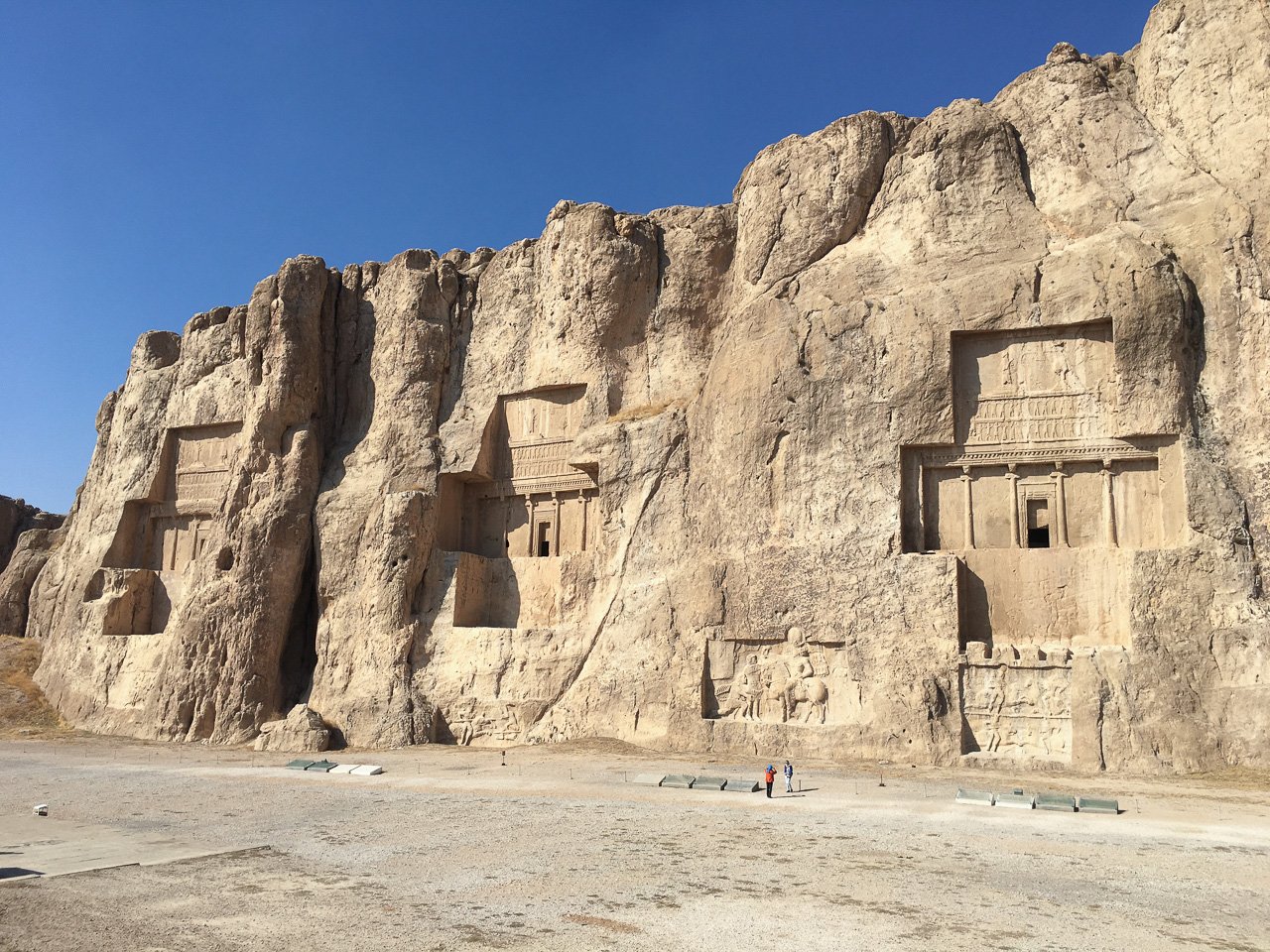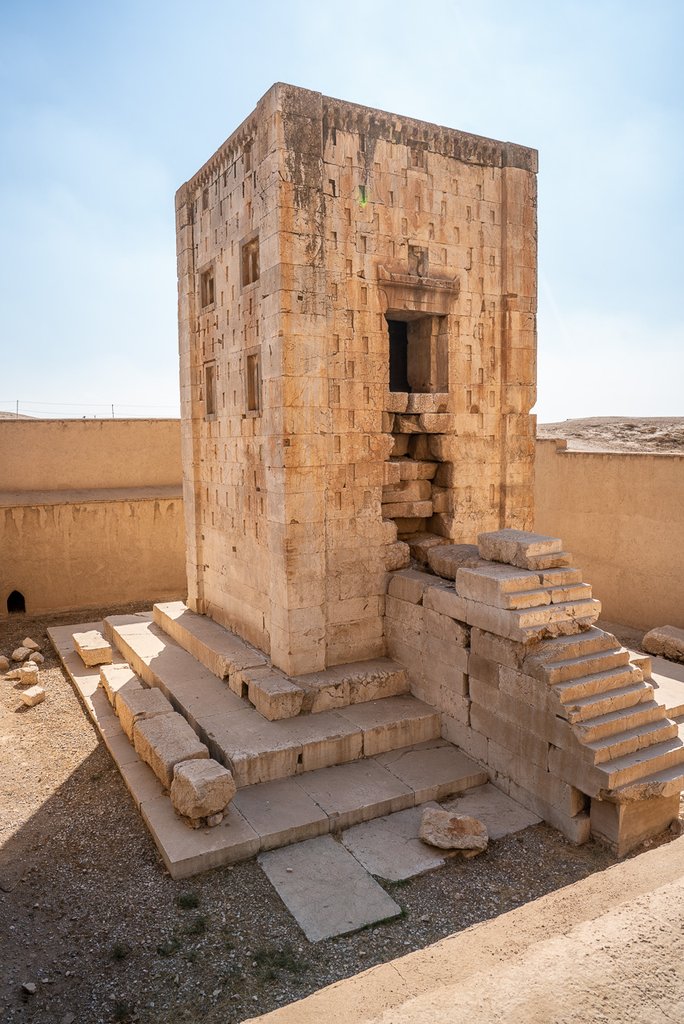
Naqsch-e Rostam


Naqsch-e Rostam
The kings tombs of the first Persian Empire
Six kilometres north of Persepolis are the tombs of the legendary kings of the Achaemenid dynasty (6th-4th century BC), who made Persia the first great empire that in its heyday extended over the territories of the present-day states of Turkey, Cyprus, Iran, Iraq, Afghanistan, Uzbekistan, Tajikistan, Turkmenistan, Syria, Lebanon, Israel, Palestine and Egypt.
Among them, besides Great King Darius I (second tomb from the right), the founder of the empire, also the famous Great King Xerxes I, who had the Acropolis in Athens burned down during his campaign against the Greeks in 480 BC.
His rock tomb (far right), however, was just being restored when I visited Naqsch-e Rostam.
In the westernmost grave (far left) Great King Darius II. is buried and on his right side Artaxerxes I.
The middle part of the cruciform tombs with its four columns is interpreted as the reproduction of the royal palace in Persepolis. Above the entrance there are reliefs showing the god Ahura Mazda giving the ring of dominion to the Great King.
During the period of the second Persian Empire (224-651 A.D.), several Sassanid kings had eight large reliefs carved on the rock face, probably to legitimize their rule.
On the western side there is an almost twelve meter high tower, the Kaʿbe-ye Zartuscht, which was dug into the earth up to almost half of its height. It was probably already erected during the reign of Darius I. However it's function is unknown.
Comments
No Comments